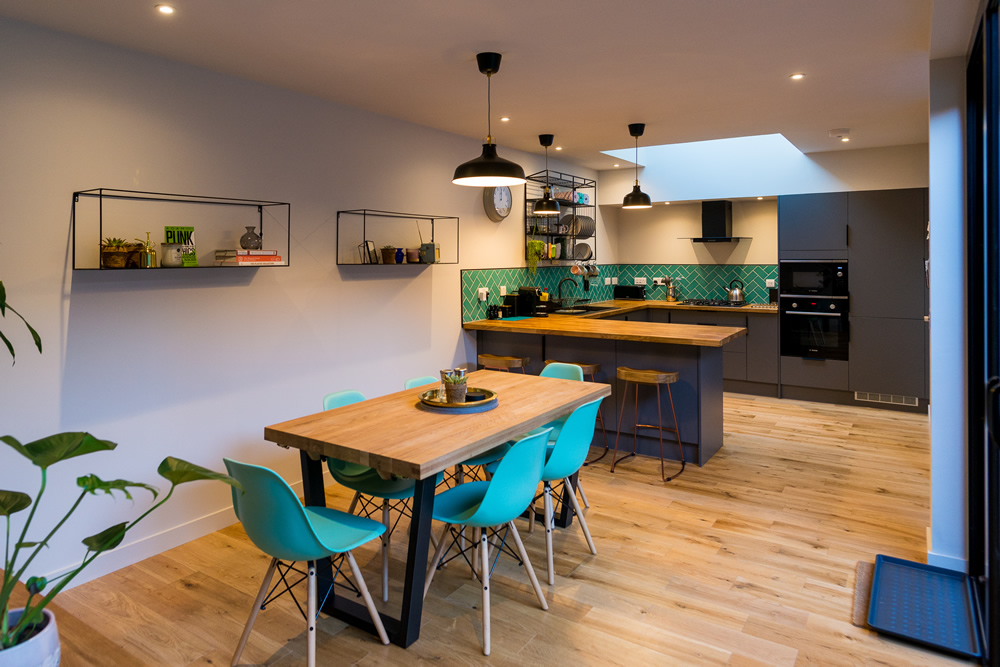The Importance of Design Stage SAP

SAP calculations are a vital element of any property development process – but they can also be a cause for confusion. For experienced developers moving through the SAP calculation process might be straightforward. However, those who are newer to property development can find this to be a challenging aspect of the planning and building control process. To align with building regulations, any new build property in the UK must go through the SAP calculation process. While this requirement may be a cause of confusion for some, it is by no means new. SAP ratings have been required for all new homes under part L of building regulations since 1995. In this blog from Cook Brown Energy, we outline what SAP is, how SAP works and the long terms advantages it can generate.
What is a SAP Calculation Score?
Within the property development sector, SAP refers to the ‘Standard Assessment Procedure’ required to progress with a property development project. This assessment procedure is the only official, government approved system for predicting the energy rating of a new home. To adhere to government regulations, SAP calculations and a predicted energy performance certificate must be submitted during the design process. If these items are not submitted, a developer is not permitted to begin working on the project.
A SAP Calculation gives a project a score ranging from 1 to 100+ for annual energy cost. This calculation considers factors such as:
- Structural elements
- Details of any heating or hot water systems
- Internal lighting
- Any renewable energy sources that will be used in the home.
Based on these factors, a higher score will indicate that a property is projected to have lower running costs. Scores of 100 or more indicate that there would be no energy cost associated with running this property.
Design Stage
At this stage, plans and drawings from a designer are used to gather a basis of numerical data for a project. This will include floor area floor heights window and door dimensions . Using this information, an assessor will calculate relevant U values for Fabric elements. Thermal Bridging will be calculated by the Assessor and a Design stage Air Test value entered, The heating and hot water are crucial parts and can have a big impact on the assessment. Finally renewable energy will need to be considered. Once the Assessor has achieved a compliant dwelling the documents can be submitted to Building Control, along with a predicted Energy Assessment.
AS-Built Stage
As-Built stage see tangible measures such as air pressure tests used to review initial scores and ratings given during the planning stages. If these tests indicate changes to the SAP are needed, the relevant changes must be made.
Once the SAP Calculation has been finalised, a built energy performance certificate (EPC) is created. An EPC is legally required in all new dwellings up for sale on the open market. An SAP Worksheet and the SAP Data Input Report are also required by Building Control.
What are the Benefits of Design Stage SAP?
A Great Comparison Point
The calculations made during a SAP offer an ideal opportunity for comparison across properties. For example, should a developer wish to compare their prospective energy running costs with a property in a different part of the UK – SAP readings make this possible. SAP calculations not only boast benefits for developers but assessors and government officials also. According to SAP information on GOV.UK, SAP’s assist them in ‘comparing the energy and environmental performance of dwellings.’ It is suggested that this information helps shape energy and environmental policies.
Adhere to Government Legislation
In addition to informing government research, the most prominent advantage of design stage SAP’s is them allowing a project to adhere to government legislation. Keeping ahead of legalities such as this helps developers avoid hefty fines that may appear along the way.
Long Term Benefits on Carbon Emissions
When SAPs became a legal requirement in 1995, much of this decision surrounded climate objectives and the active reduction of carbon emissions. By placing greater emphasis on creating designs that offer greater energy efficiency, architects have become better versed in creating more carbon conscious designs. Tightening the targets not only challenges architects to design in a more environmentally minded way, it also creates a ripple effect across the property industry as a whole – moving towards more climate friendly procedures as an industry.
Design Stage SAP with Cook Brown Energy
Here at Cook Brown Energy, we provide professional energy consultancy services suited to both commercial and residential environments. Our energy assessment services cover SAP, MEES, and EPCs in addition to many other energy assessment varieties. Our SAP service includes a fully supportive consultancy service, design stage and as built SAP Calculations, Elemental U-Value calculations and landmark registration, and energy performance certificate.
With offices across England and Wales, we have worked across residential and commercial projects across the UK and are committed to supplying high quality consultancy throughout a range of contexts. We also work alongside Cook Brown Building Control to ensure that our customers are supported across all bases including Building Control and Inspection. To speak to a member of our team about our services, get in touch today or contact us for a quote.